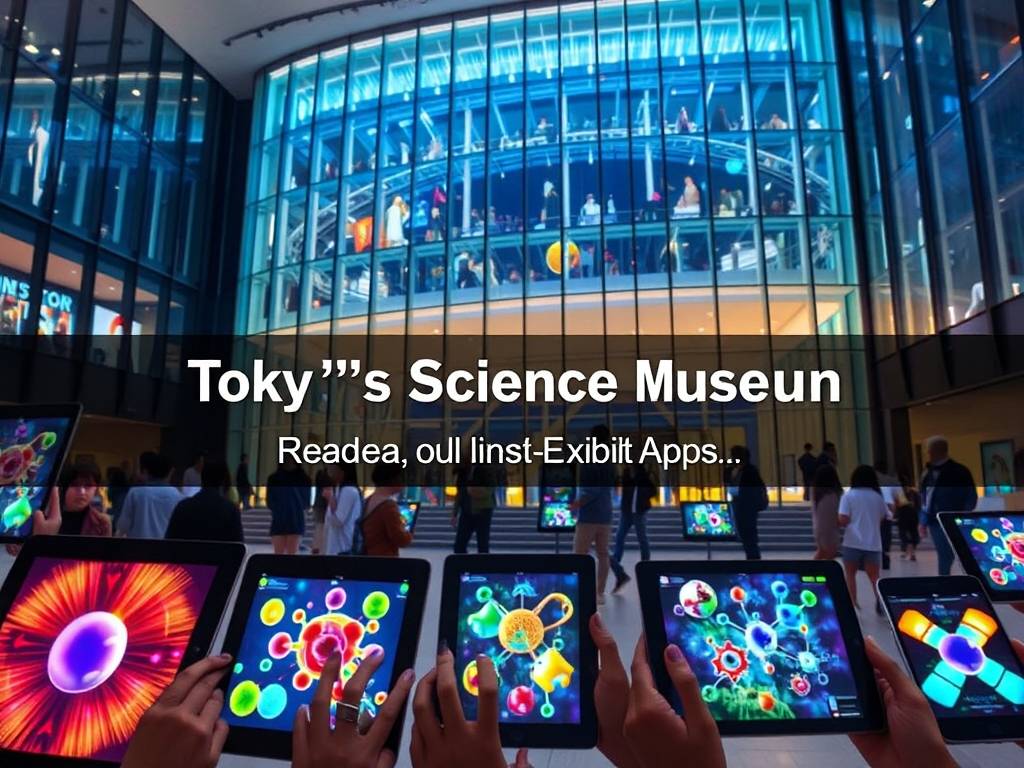Japan Travel
Tokyo’s Science Museum App Reviews: Read About Exhibit Apps
Navigating Innovation: A Deep Dive into Tokyo's Premier Science Museum App Experiences
In the heart of a city that pulses with both ancient tradition and bleeding-edge technology, Tokyo's science museums stand as beacons of curiosity and discovery. But in an age where our smartphones are extensions of our minds, the experience no longer begins at the ticket counter. It begins with a download. The digital companions to these temples of science—their official exhibit apps—are transforming how we explore, learn, and interact. If you're planning a visit or are simply a science enthusiast from afar, understanding the landscape of these Tokyo science museum app reviews is your first step toward a truly enriched experience. This guide will walk you through everything you need to know, from the must-have features to the real-world user feedback that shapes these digital tools.
Let's start with the crown jewel: The National Museum of Emerging Science and Innovation, more famously known as Miraikan. Home to the astonishing Asimo robot and the iconic Geo-Cosmos globe, Miraikan's app is designed to be a personal guide to the future. The general consensus from Miraikan app user experiences is that it excels as a planning tool. Its interactive map is frequently praised for being intuitive, allowing you to plot your route to must-see exhibits like the "Androids: What is Human?" display before you even step inside. For non-Japanese speakers, the multilingual exhibit explanations are a game-changer, offering detailed context in English, Chinese, and Korean that sometimes surpasses the brevity of the physical placards.

However, some mobile app feedback for science centers points out that the app's functionality can be somewhat passive once you're in the thick of the action. While it provides excellent information, it lacks extensive augmented reality (AR) features that other museums are beginning to embrace. The key takeaway? The Miraikan app is your essential pre-visit planning guide for Tokyo museums. Download it, star your must-see exhibits, and use it to navigate, but don't expect it to be a deeply interactive layer over the exhibits themselves.
Shifting from the future to the fundamentals, the National Museum of Nature and Science in Ueno offers a breathtaking journey through the evolution of life and our planet. Its app is a treasure trove of information, but it serves a slightly different purpose. Reviews of Tokyo museum exhibit applications often highlight this app's strength as a deep, scholarly companion. If you're fascinated by the complete skeleton of a blue whale or the intricacies of Japanese prehistoric pottery, the app provides layers of detail that you can absorb at your own pace. It’s perfect for the visitor who wants to understand the "why" and "how" behind every display.
A common piece of feedback on digital guide apps for Tokyo is the desire for more child-friendly engagement. While the museum itself is fantastic for families, the app's content is often text-heavy. This is where savvy visitors use the app strategically. It's less about keeping a child's attention for hours and more about enhancing an adult's understanding or helping a student with a school project find specific information. For a family-friendly science museum app in Japan, you might rely more on the physical, hands-on exhibits while using the app to answer the deep, curious questions that inevitably arise.
Beyond these two giants, Tokyo's museum app ecosystem flourishes with specialized offerings. The Ghibli Museum, while not a traditional science museum, offers a masterclass in app-based storytelling and enhancing museum visits with smartphone technology, using its app to create a sense of magic and discovery through subtle animations and a whimsical interface. Meanwhile, smaller technology and robotics museums often partner with app developers to create interactive learning apps for museum visitors that feature AR filters letting you pose with a virtual robot or disassemble a virtual engine.

So, what should you realistically expect when you download one of these apps? Based on a synthesis of thousands of user reviews, here are the core benefits and common pitfalls.
The Pros: Why You Should Bother
- Beating the Crowds and the Clock: The most practical benefit is efficient navigation. Using an app's map to locate less-crowded exhibits or find the nearest restroom is a simple luxury that improves any visit.
- Deeper Dives at Your Fingertips: These apps solve the problem of information overload. Instead of trying to read every placard, you can focus on the exhibits that truly captivate you and use the app to access a richer repository of stories, videos, and scientific papers related to popular science exhibits in Tokyo.
- Accessibility and Inclusion: The availability of multilingual exhibit explanations cannot be overstated. It democratizes access to knowledge, making Tokyo's world-class institutions welcoming to a global audience. Furthermore, features like adjustable text size and audio descriptions are becoming more common, making science accessible to all.
- Pre and Post-Visit Engagement: The learning doesn't have to start or end at the museum door. Many apps allow you to review your favorite exhibits, access related content, and even take virtual quizzes days after your visit, extending the educational value.
The Cons: What to Watch Out For
- Battery Drain: This is the number one complaint in mobile app feedback for science centers. A long museum visit paired with constant screen-on time is a recipe for a dead phone. The solution? Carry a portable battery pack. It’s an essential accessory for the modern museum-goer.
- Spotty Connectivity: Some older museum buildings can be Wi-Fi dead zones. The best apps, as noted in reviews of Tokyo museum exhibit applications, offer full offline functionality, allowing you to download all content at home or in the hotel lobby. Always check the app's description for this critical feature.
- The Distraction Factor: There's a delicate balance between enhanced reality and missing the reality right in front of you. Staring at a screen to watch a virtual reconstruction might mean you miss the awe-inspiring beauty of the actual fossil. The best practice is to use the app intentionally—refer to it for specific information, then put it away to simply absorb the exhibit.
Ultimately, the success of your digital exploration comes down to your own preparation. Before your visit, spend 15 minutes browsing the app store. Look for keywords like "National Museum of Nature and Science official app" or "Miraikan guide." Read the most recent Tokyo science museum app reviews to see if past issues have been resolved. Once you've chosen your apps, download them over a strong Wi-Fi connection and explore their features. Does it require an account? Can you download content for offline use? A little preparation ensures that your digital guide enhances, rather than hinders, your journey of discovery.
Tokyo's science museums are marvels of the physical world, housing everything from dinosaur bones to humanoid robots. Their accompanying apps are not meant to replace the wonder of standing before these artifacts; they are designed to amplify it. They are the keys to unlocking deeper stories, navigating complex spaces, and personalizing your journey through the annals of science. By choosing the right app and using it wisely, you transform your smartphone from a distraction into the most knowledgeable tour guide you could ever have, ready to reveal the hidden secrets behind every exhibit and turn a simple day out into an unforgettable exploration of our universe.
相关文章
- Kyoto’s Traditional Shopping Gear Reviews: Read About Shopper Tools
- Japan’s Budget Accommodation Gear Reviews: Read About Travel Equipment
- Tokyo’s Transportation Gear Reviews: Read About Commuter Tools
- Japan’s Mountain Star Gazing Gear Reviews: Read About Telescope Tools
- Japan’s Traditional Tea Ceremony Gear Reviews: Read About Tea Tools
- Japan’s Summer Surf Gear Reviews: Read About Beach Equipment
- Kyoto’s Fall Foliage Gear Reviews: Read About Hiking Equipment
- Japan’s Budget Dining Gear Reviews: Read About Food Tools
- Tokyo’s Science Museum Gear Reviews: Read About Exhibit Tools
- Japan’s Island Family Beach Gear Reviews: Read About Kid Equipment
发表评论
评论列表
- 这篇文章还没有收到评论,赶紧来抢沙发吧~


